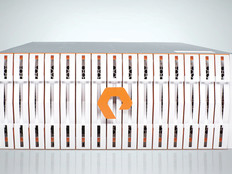White Paper Offers Clear Definitions of Cloud Computing
Perhaps one of today’s most high-profile manifestations of a converged infrastructure is the cloud. Cloud computing goes by different definitions, depending on whom you talk to. Those definitions may, in turn, be influenced by what people have heard, seen, read or experienced of the technology.
For many, cloud computing is an IT management and operating philosophy or paradigm. Clouds can represent an architecture, product or service — offered free or for a fee — that can be delivered on premises, remotely or via a combination of approaches. Clouds can be public or private, or a hybrid of the two, combining services and products. And they can function as a replacement for traditional IT or as a complement to enable new functionality.
There are many kinds of cloud computing. The cloud can be infrastructure as a service (IaaS), which includes cloud-based server, storage, networking and I/O resources; platform as a service (PaaS), also known as middleware, which provides environments for developing and deploying applications that run on a public or private IaaS; and application as a service (AaaS) or software as a service (SaaS), which represent the actual cloud-based productivity and other programs that IT may deliver to end users. Private clouds are similar to public clouds except that they are intended to be used by a single organization. A private cloud can be built and located entirely internally, or it can leverage external, public resources. The line between a private cloud and a traditional IT infrastructure can be blurry depending on different definitions or solution offerings. Many of the same tools and technologies — from hardware and software to networking — are used for both public and private clouds, as well as for traditional IT environments.
A private cloud extends to organizations the same operating principals of a public cloud — agility, elasticity, effective resource usage and metering for management insight — but it also offers more control. A private cloud can evolve to support chargeback or billing, where applicable, as well as self-provisioning or resource procurement by consumers of information services.
For more information on how cloud computing fits into data center convergence read the CDW•G white paper on Data Center Convergence.







